Crab and Lobster Fisheries in Scotland: Results of Stock Assessments 2009-2012: Scottish Marine and Freshwater Science Vol 7 No 9
This report presents summaries of historic and recent landings data and the results of
stock assessments for brown crab, velvet crab and lobster, based on data collected
between 2009 and 2012.
7. Figures
Figure 1: Crab and lobster fishery assessment areas in Scotland.
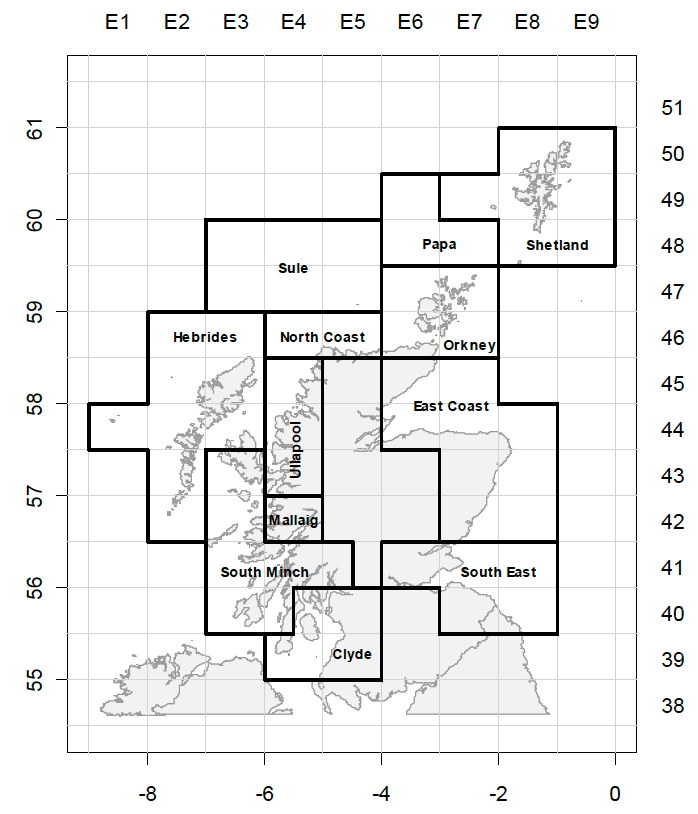
Figure 2: Scottish crab and lobster fishery statistics. a) Landings (tonnes) into Scotland, b) landings value (£IM), and, c) price per kilo (£/kg) for brown crab, velvet crab and lobster, 1974 -2012. Data sourced from Fisheries Management Database.
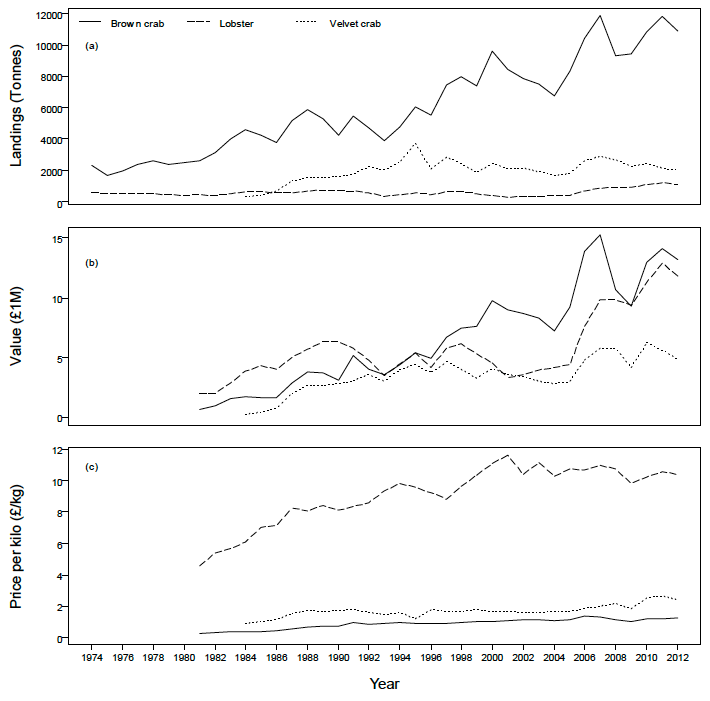
Figure 3: Brown crab landings (tonnes) into Scotland by assessment area, 1974‑2012. Data from the Fisheries Management Database; 'Outside' relates to brown crab landed outside MSS crab and lobster assessment areas; see Figure 1 for area locations.
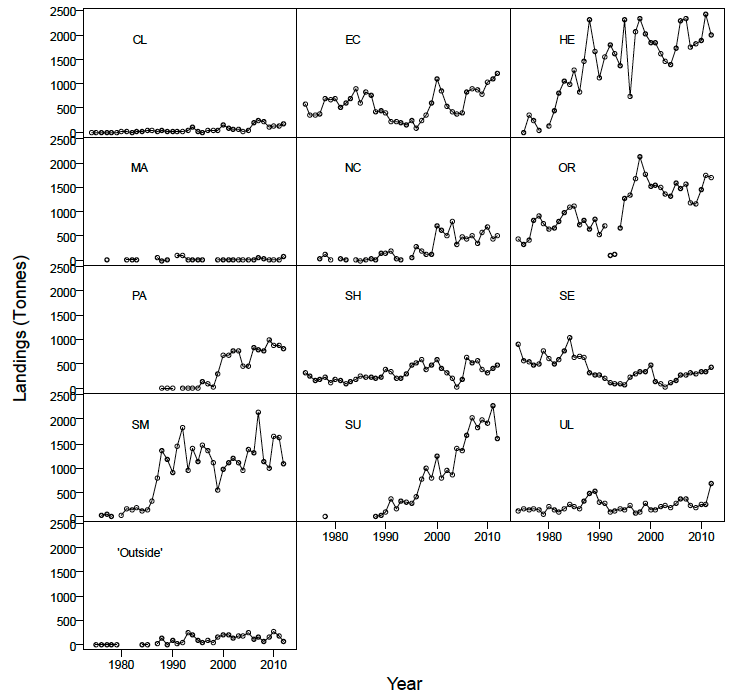
Figure 4: Velvet crab landings (tonnes) into Scotland by assessment area, 1984‑2012. Data from the Fisheries Management Database; 'Outside' relates to velvet crab landed outside MSS crab and lobster assessment areas; see Figure 1 for area locations.
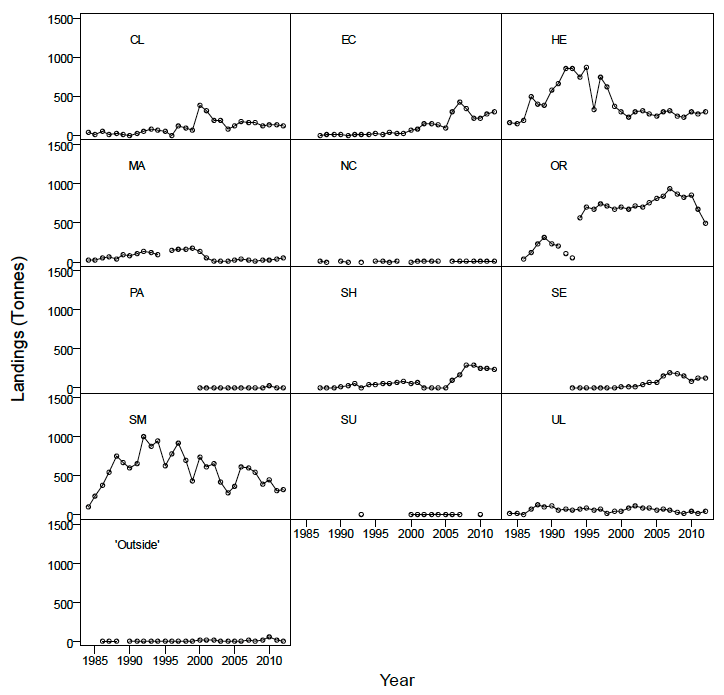
Figure 5: Lobster landings (tonnes) into Scotland by assessment area, 1974-2012. Data from the Fisheries Management Database. 'Outside' relates to lobster landed outside MSS crab and lobster assessment areas; see Figure 1 for area locations.
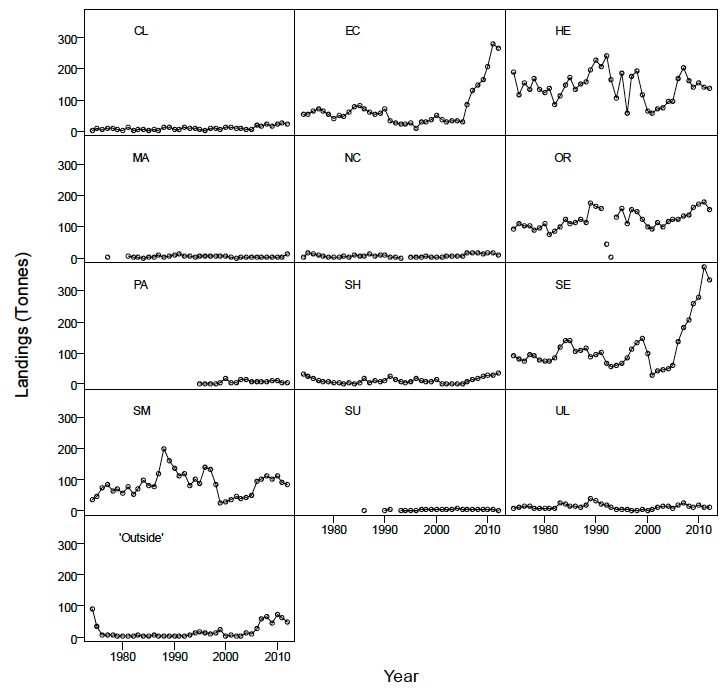
Figure 6: Brown crab landings (tonnes) by statistical rectangle between 2009 and 2012. Black circles represent landings into Scotland. Data are from Fisheries Management Database. Green circles represent landings into Republic of Ireland - data provided by the Irish Marine Institute.
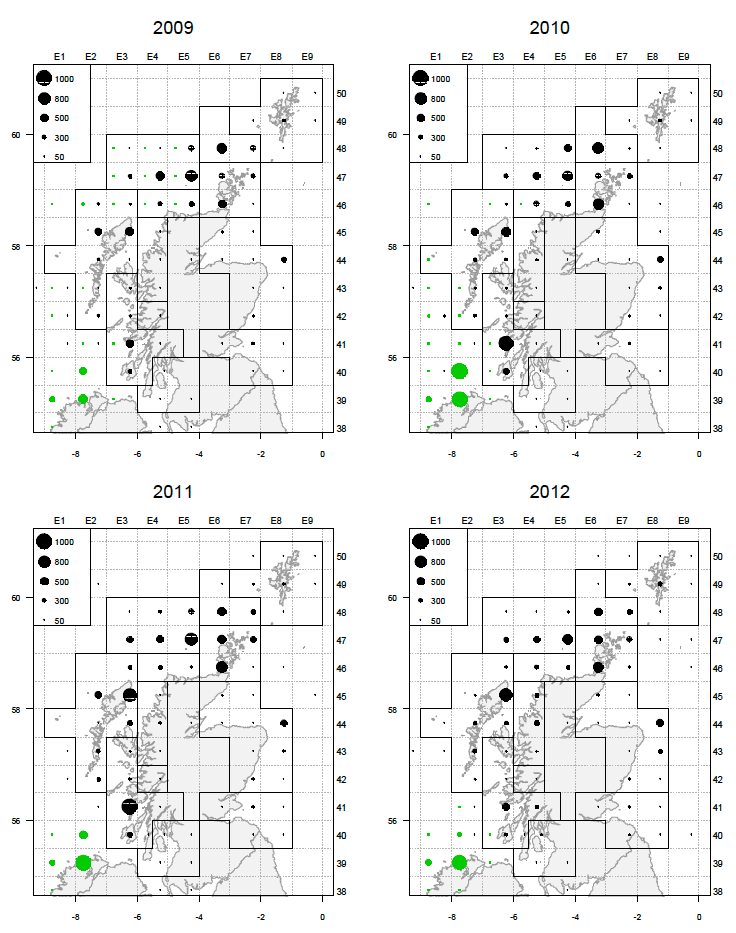
Figure 7: Velvet crab landings (tonnes) by statistical rectangle between 2009 and 2012. Black circles represent landings into Scotland. Data are from Fisheries Management Database.
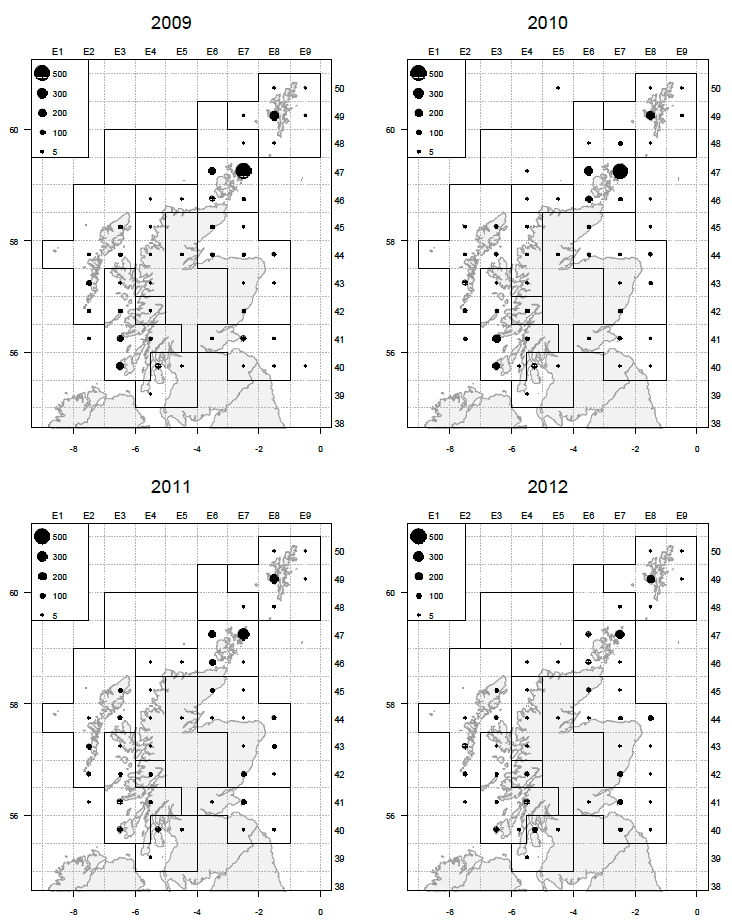
Figure 8: Lobster landings (tonnes) by statistical rectangle between 2009 and 2012. Black circles represent landings into Scotland. Data are from Fisheries Management Database.
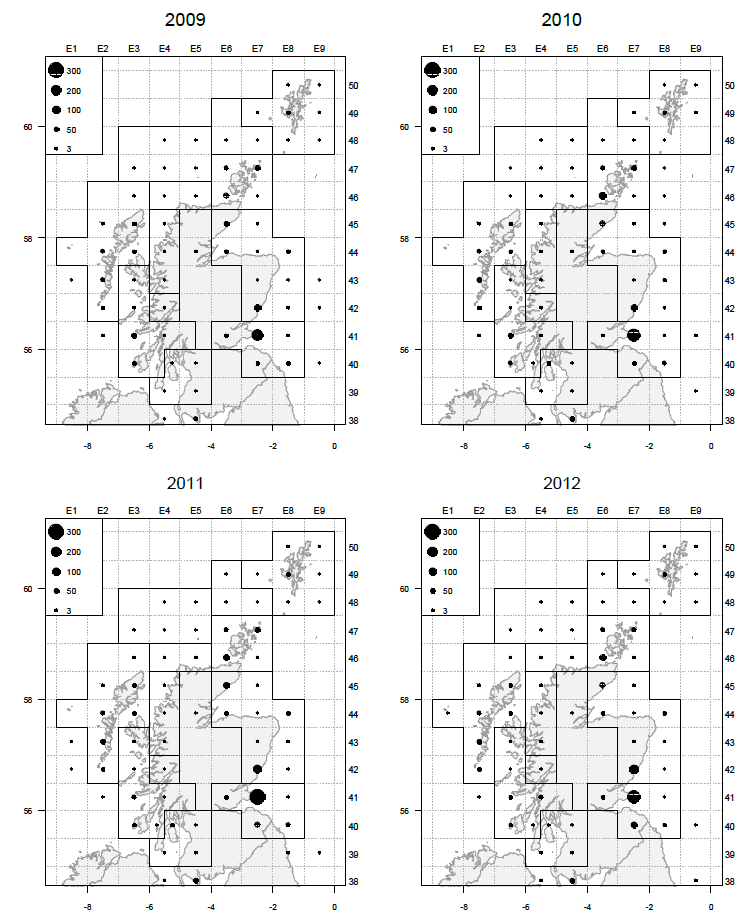
Figure 9: Brown crab mean size in landings (dashed line) and mean size of the largest individuals above the 80th percentile of size (full line) by assessment area, 1981-2012. A minimum of 50 individuals was used each year to calculate mean sizes.
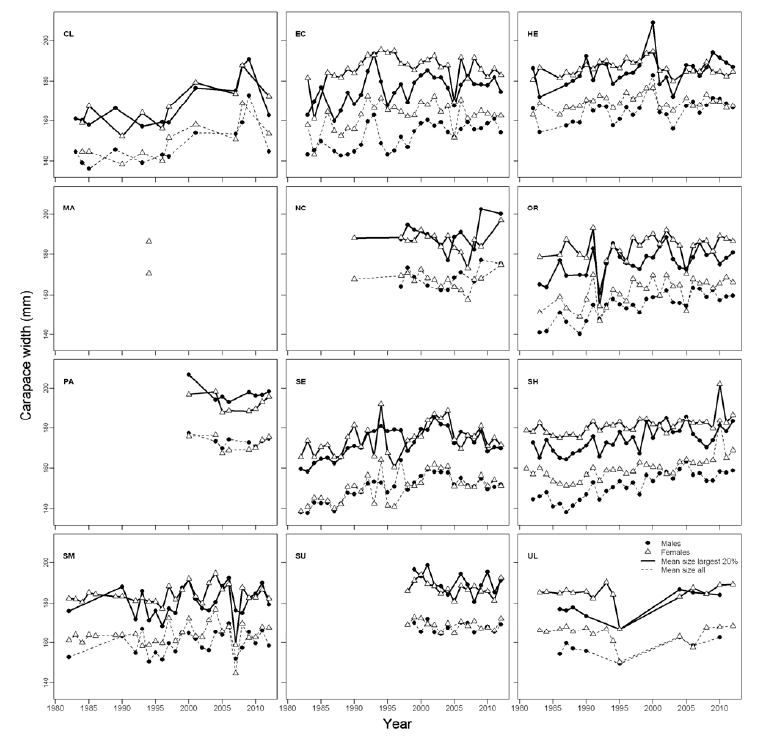
Figure 10: Velvet crab mean size in landings (dashed line) and mean size of the largest individuals above the 80th percentile of size (full line) by assessment area, 1987-2012. A minimum of 50 individuals was used each year to calculate mean sizes.
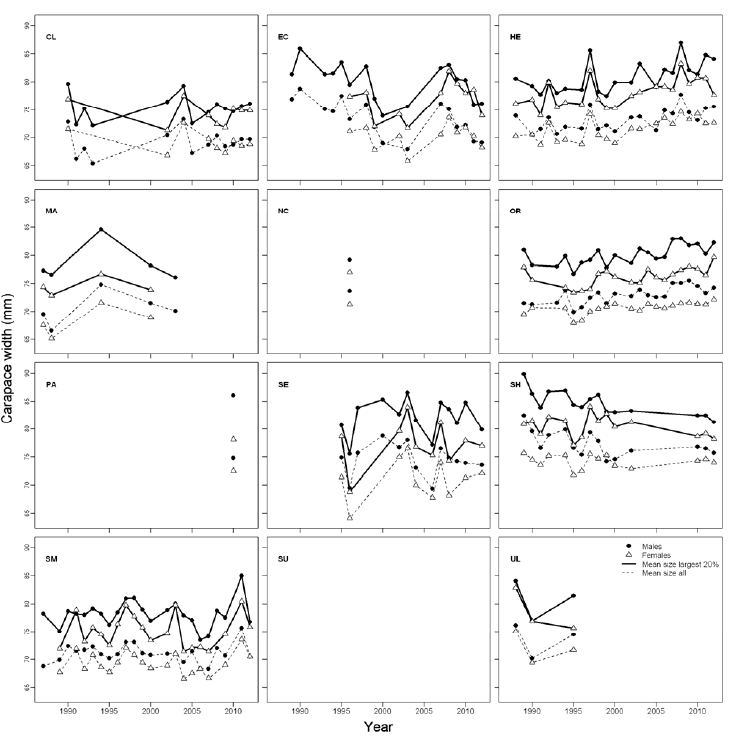
Figure 11: Lobster mean size in landings (dashed line) and mean size of the largest individuals above the 80th percentile of size (full line) by assessment area, 1981-2012. A minimum of 50 individuals were used each year to calculate mean sizes.
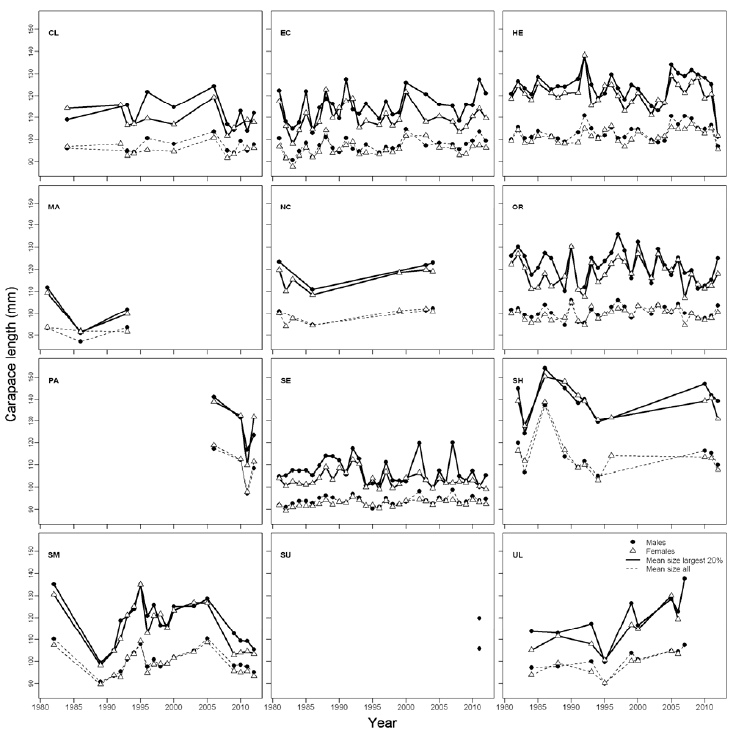
Figure 12: Brown crab sex ratio (percentage of males) in landings by assessment area, 1981-2012.
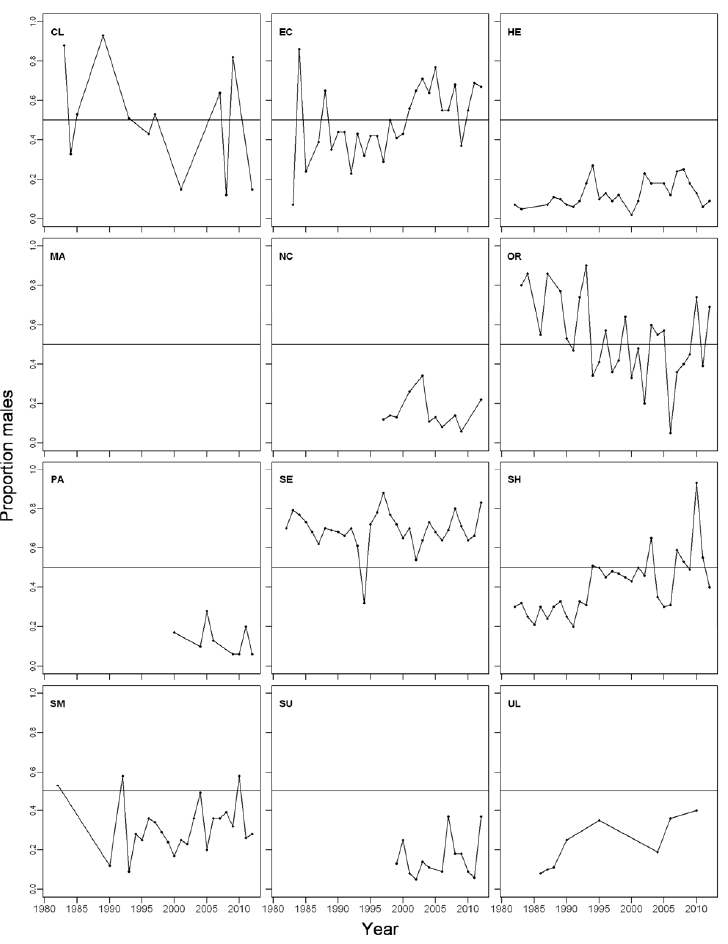
Figure 13: Velvet crab sex ratio (percentage of males) in landings by assessment area, 1987-2012.
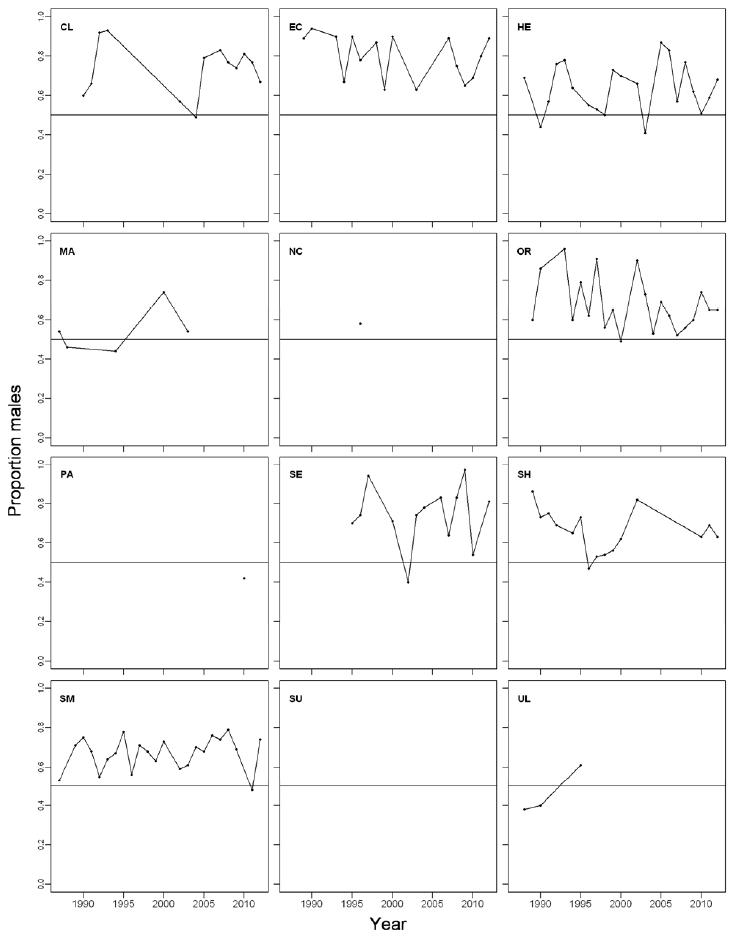
Figure 14: Lobster sex ratio (percentage of males) in landings, 1981-2012.
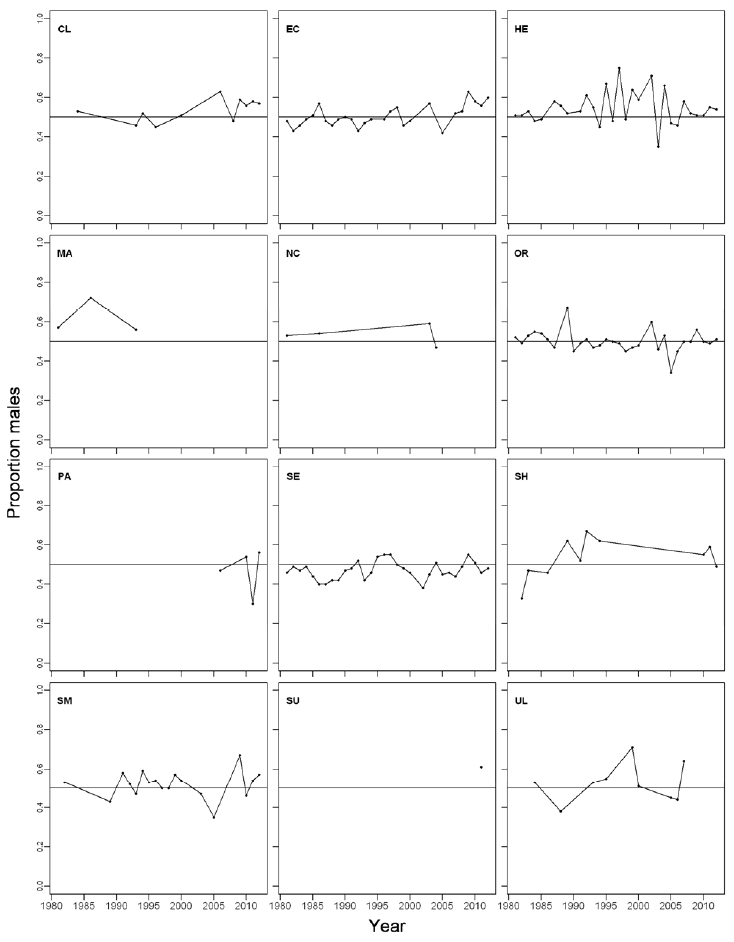
Figure 15: Male brown crab fishing mortality (Fbar) time series for the last three assessments in relation to the F MSY proxy (F MAX) and other potential reference points (F 0.1, F 30%SpR).
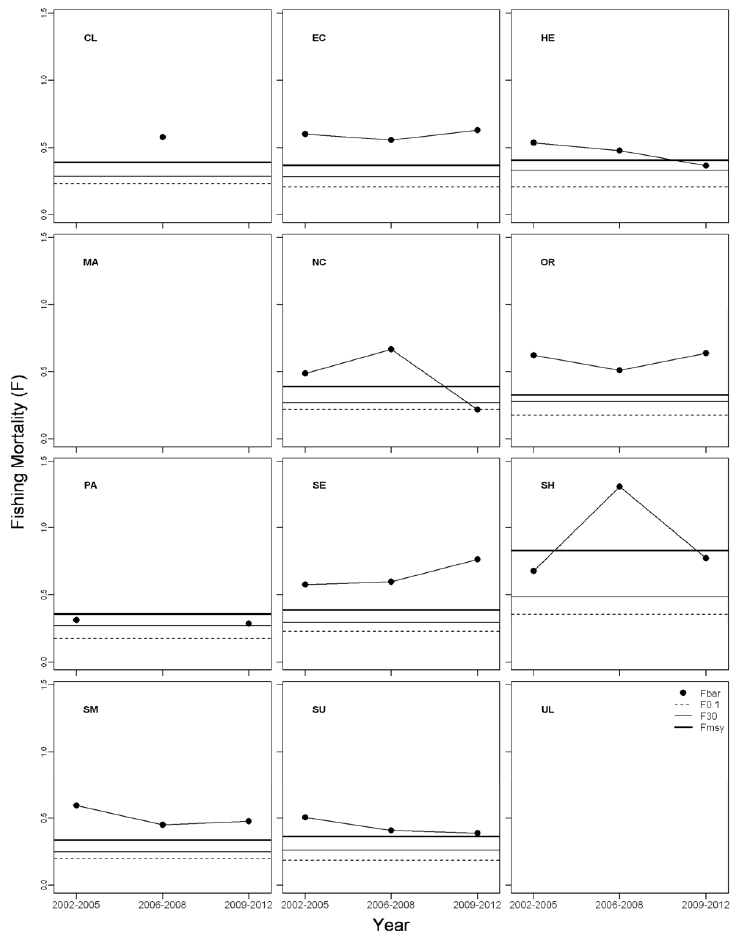
Figure 16: Female brown crab fishing mortality (Fbar) time series for the last three assessments in relation to the F MSY proxy (F MAX) and other potential reference points (F 0.1, F 30%SpR).
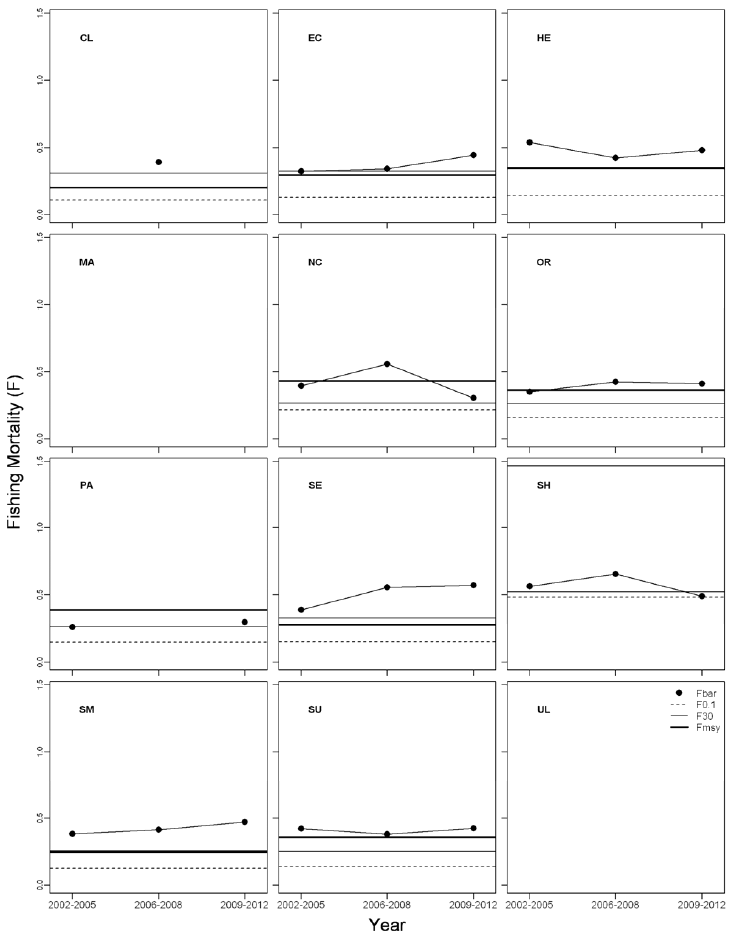
Figure 17: Male velvet crab fishing mortality (Fbar) time series for the last three assessments in relation to the F MSY proxy (F MAX) and other potential reference points (F 0.1, F 30%SpR). Shetland values are on a different scale shown on the right vertical axis.
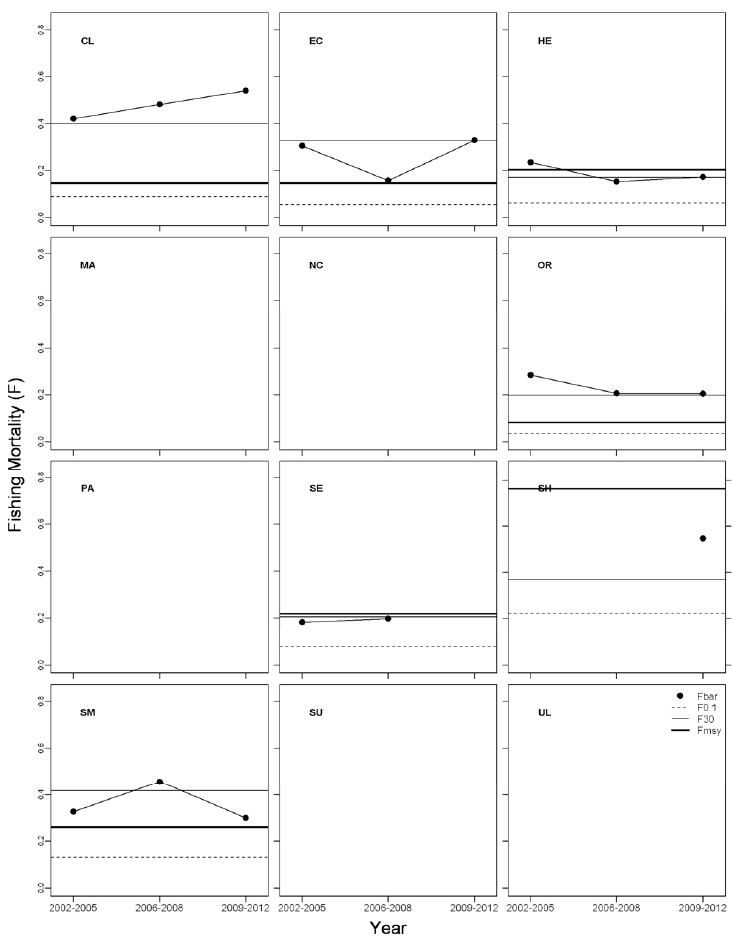
Figure 18: Female velvet crab fishing mortality (Fbar) time series for the last three assessments in relation to the F MSY proxy (F MAX) and other potential reference points (F 0.1, F 30%SpR). Shetland values are on a different scale shown on the right vertical axis.
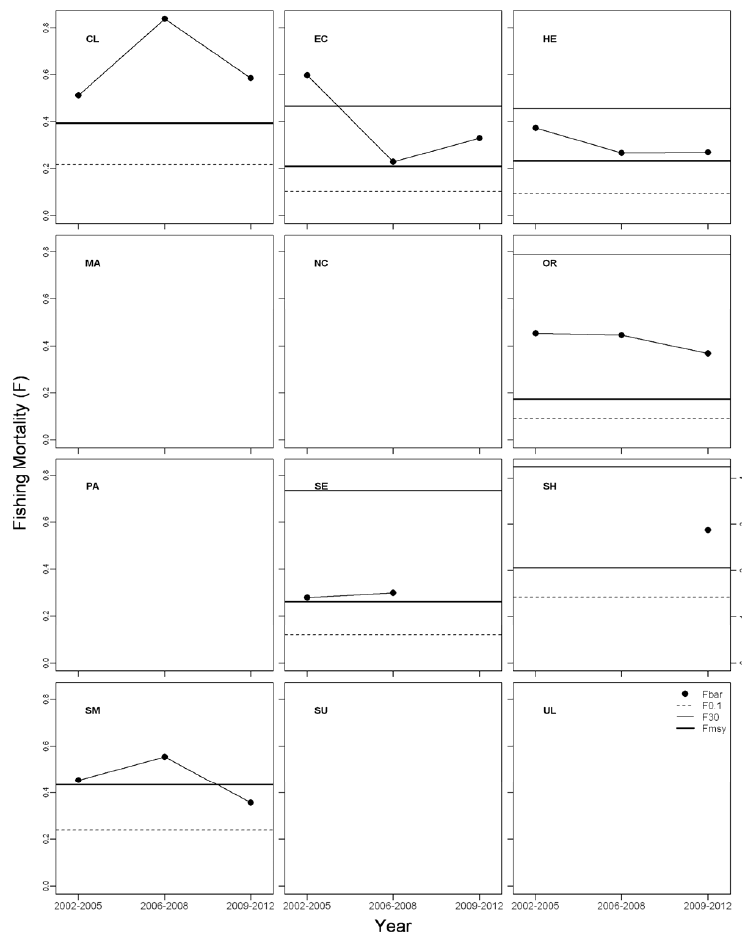
Figure 19: Male lobster fishing mortality (Fbar) time series for the last three assessments in relation to the F MSY proxy (F MAX) and other potential reference points (F 0.1, F 30%SpR).
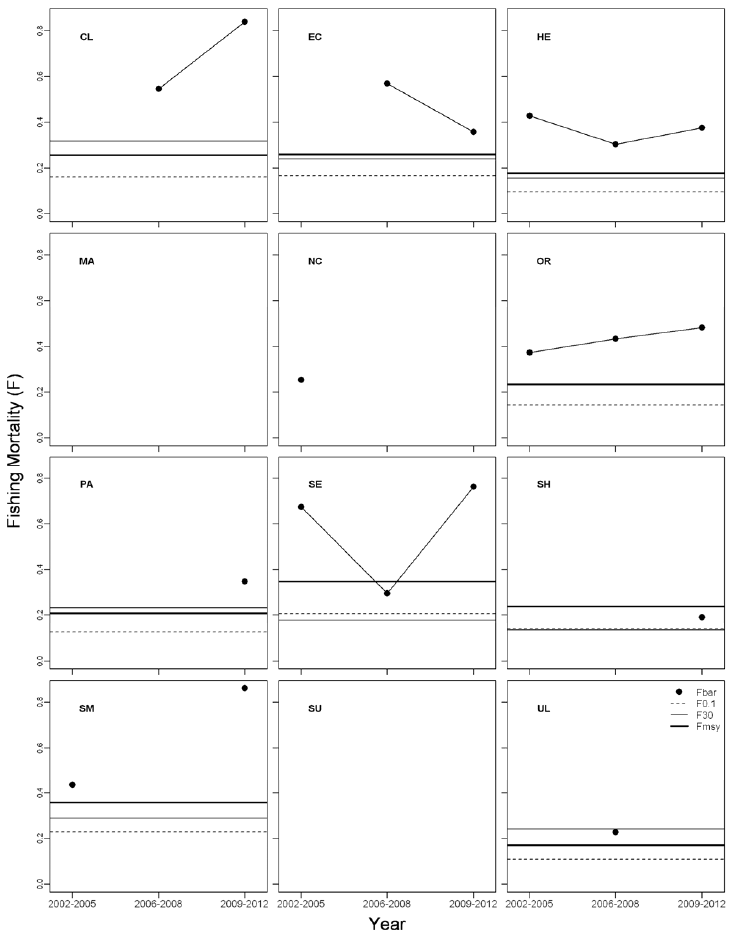
Figure 20: Female lobster fishing mortality (Fbar) time series for the last three assessments in relation to the F MSY proxy (F MAX) and other potential reference points (F 0.1, F 30%SpR).
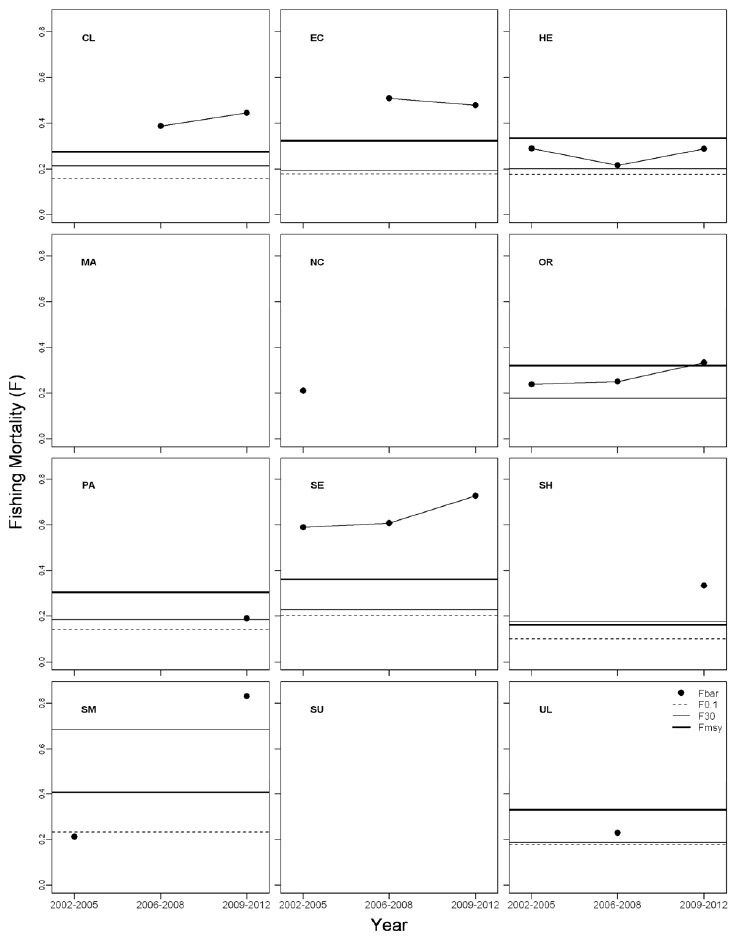
Figure 21: Male brown crab biomass and yield-per-recruit ( YPR) predictions given changes from current effort by assessment area, data from 2009-2012.
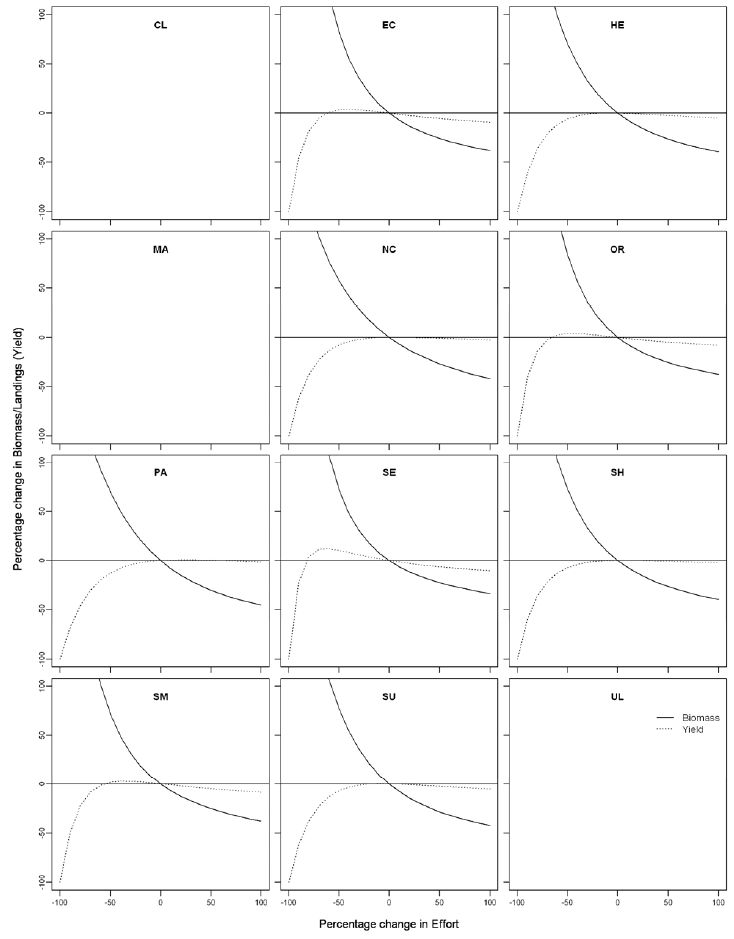
Figure 22: Female brown crab biomass and yield-per-recruit ( YPR) predictions given changes from current effort by assessment area, data from 2009-2012.
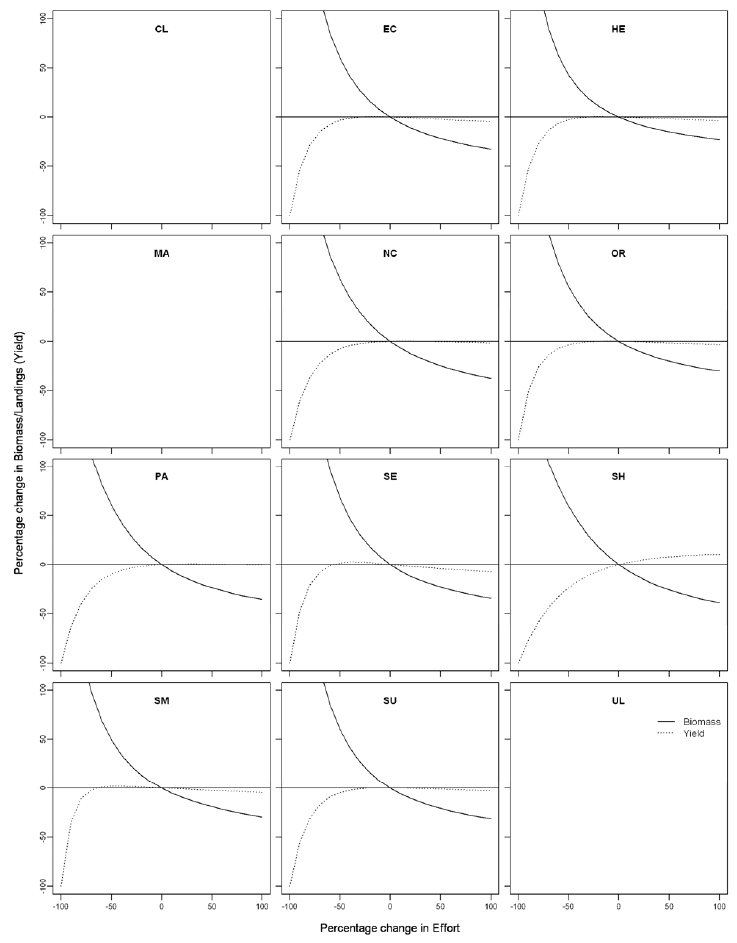
Figure 23: Male velvet crab biomass and yield-per-recruit ( YPR) predictions given changes from current effort by assessment area, data from 2009-2012.
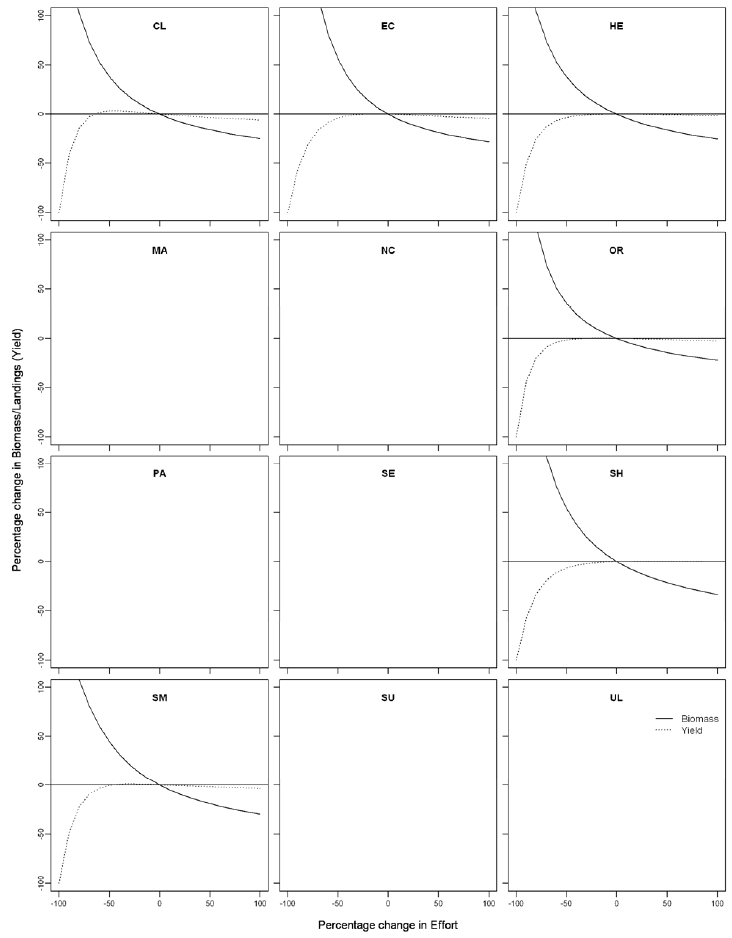
Figure 24: Female velvet crab biomass and yield-per-recruit ( YPR) predictions given changes from current effort by assessment area, data from 2009-2012.
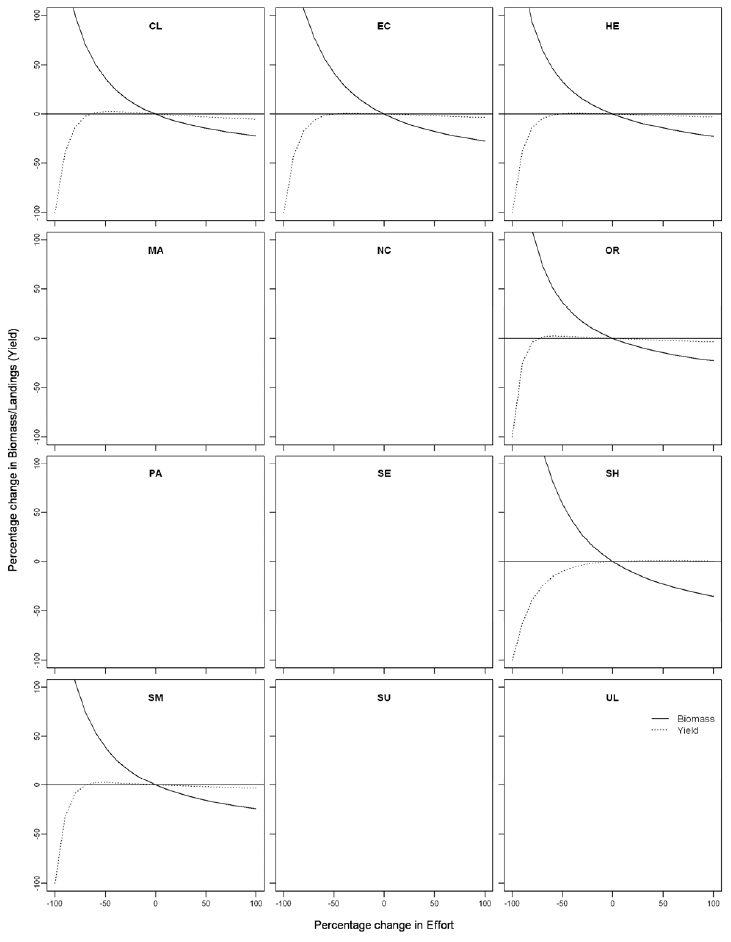
Figure 25: Male lobster biomass and yield-per-recruit ( YPR) predictions given changes from current effort by assessment area, data from 2009-2012.
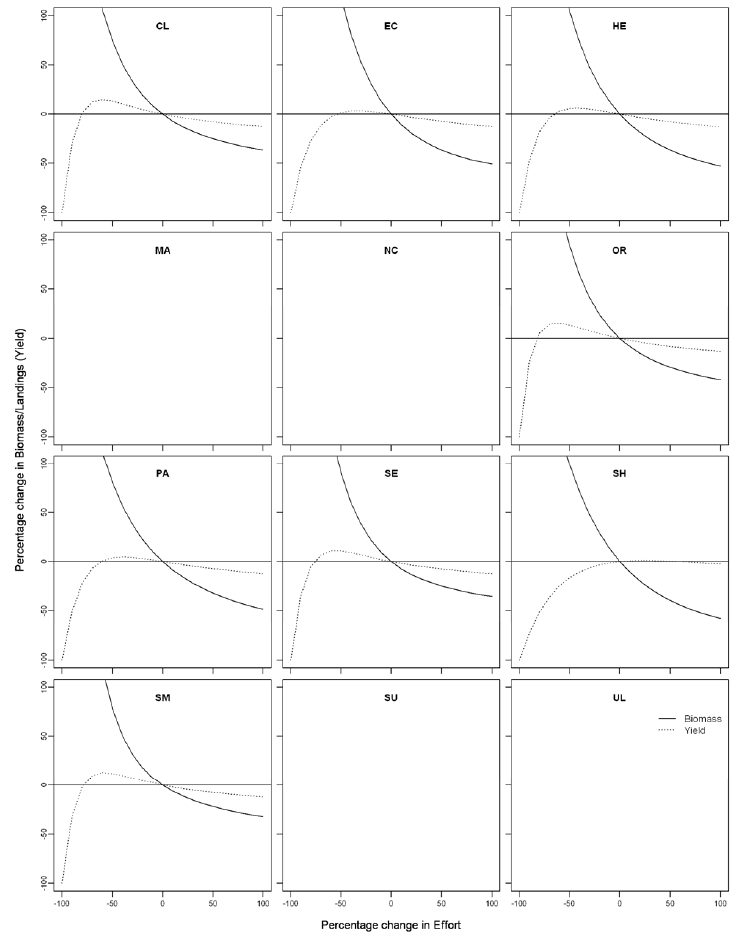
Figure 26: Female lobster biomass and yield-per-recruit ( YPR) predictions given changes from current effort by assessment area, data from 2009-2012.
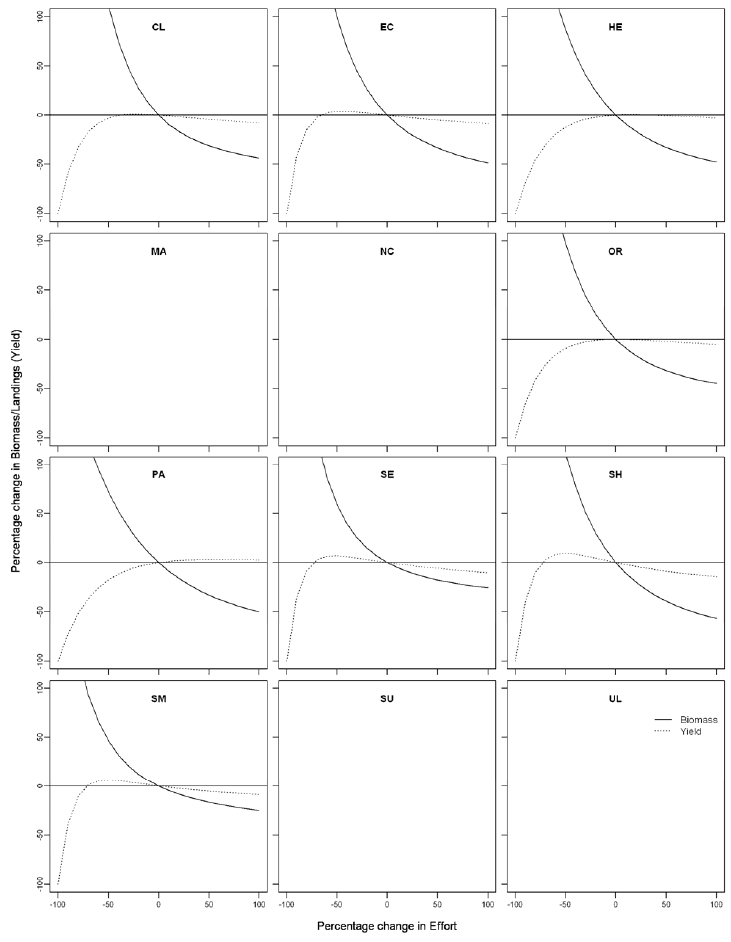
Contact
There is a problem
Thanks for your feedback